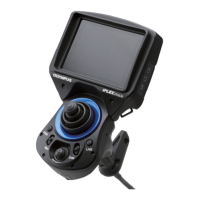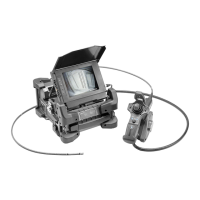What to do if Olympus Analytical Instruments shows 'IMAGER ERROR'?
- MMegan CampbellSep 8, 2025
If you encounter an 'IMAGER ERROR' on your Olympus Analytical Instruments, stop the inspection and turn the instrument off, then on again.

What to do if Olympus Analytical Instruments shows 'IMAGER ERROR'?
If you encounter an 'IMAGER ERROR' on your Olympus Analytical Instruments, stop the inspection and turn the instrument off, then on again.
How to improve image brightness on my Olympus Analytical Instruments?
If the image brightness is not optimum on your Olympus Analytical Instruments, configure the proper setting by performing the [BRT] lever operation. Check if the objective lens on the insertion tube's distal end or the optical adapter is dirty and clean it. Also, ensure that the external monitor is correctly adjusted and the optical adapter is properly attached. If the optical adapter is old, consider replacing it.
What to do if I get an 'OVER CURRENT (USB)' error on my Olympus Analytical Instruments?
To resolve the 'OVER CURRENT (USB)' error on your Olympus Analytical Instruments, first, power off the instrument and then turn it back on. Ensure you are using a recommended USB flash drive. If the issue persists, disconnect all USB devices except the flash drive, as other connected devices might be causing the overcurrent.
What to do if my Olympus Analytical Instruments says 'NO RECORDING MEDIA'?
If your Olympus Analytical Instruments displays 'NO RECORDING MEDIA', load the USB flash drive and try again. If the problem persists, turn the instrument off, then on again.
What to do if Olympus Analytical Instruments shows 'HIGH TEMPERATURE (DISTAL END)'?
If you get a 'HIGH TEMPERATURE (DISTAL END)' message on your Olympus Analytical Instruments, immediately pull the insertion tube out of the observation object.
What to do if I get a 'RECORDING MEDIA ERROR' on my Olympus Analytical Instruments?
To resolve a 'RECORDING MEDIA ERROR' on your Olympus Analytical Instruments, format the USB flash drive directly on the instrument.
How to fix a blurry image on my Olympus Analytical Instruments?
If the image from your Olympus Analytical Instruments is not sharp, try wiping the objective lens on the insertion tube's distal end or the optical adapter with a clean piece of gauze or a cotton swab. Ensure the optical adapter is properly attached and that the external monitor is correctly adjusted.
Why is the operation load for articulation getting heavier on my Olympus Analytical Instruments?
If you are experiencing heavy operation load for articulation with your Olympus Analytical Instruments, the angulation lock might be engaged. Press down the [ANGLE LOCK] lever to release the angulation lock.
What to do if Olympus Analytical Instruments shows 'HIGH TEMPERATURE (MAIN UNIT)'?
If you see a 'HIGH TEMPERATURE (MAIN UNIT)' message on your Olympus Analytical Instruments, it indicates the main unit is overheating. Stop the inspection, allow the instrument to cool down, and then turn the power back on.
What to do if Olympus Analytical Instruments shows 'IMAGE CAPTURE ERROR'?
If you encounter an 'IMAGE CAPTURE ERROR' on your Olympus Analytical Instruments, stop the inspection and turn the instrument off, then turn it on again.
| Brand | Olympus |
|---|---|
| Model | IPLEX RX Series |
| Category | Analytical Instruments |
| Language | English |
Describes the primary purpose and application of the instrument for inspection.
Provides guidance on safe and correct operation of the instrument.
Details required devices and compatible combinations for the product.
Outlines potential enhancements to the instrument's capabilities.
Explains signal words and symbols indicating hazards and important notes.
Covers essential safety rules and warnings for instrument handling and operation.
Identifies safety ratings and cautions located on the main unit.
Identifies safety ratings and cautions located on the control unit.
Lists all included items and instructions for checking contents upon receipt.
Describes the items stored within the optical adapter case.
Directs users to system chart for information on optional accessories.
Provides diagrams and labels for main and control unit components.
Covers initial steps including preparing the power supply (battery/AC adapter).
Guides users on how to view an object using the insertion tube and angulation controls.
Explains how to navigate and use the instrument's menu system.
Outlines the overall process for performing stereo measurements.
Explains when and how to replace the instrument's battery.
Lists common error messages, their causes, and recommended solutions.
Specifies the recommended environmental conditions for instrument operation.
Illustrates the overall system configuration and component connections.











